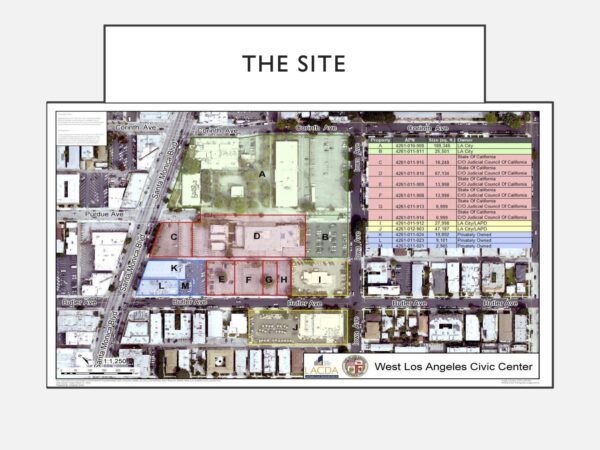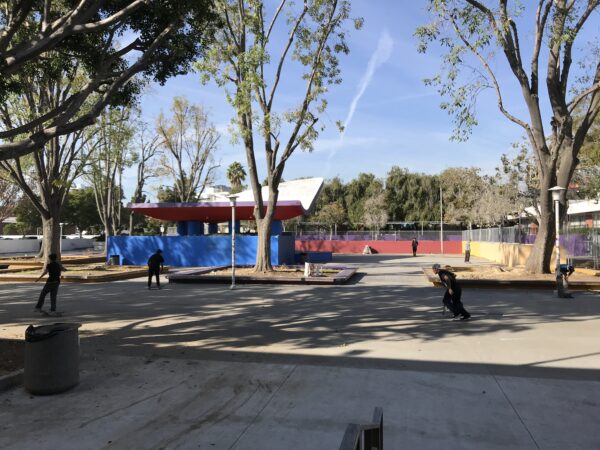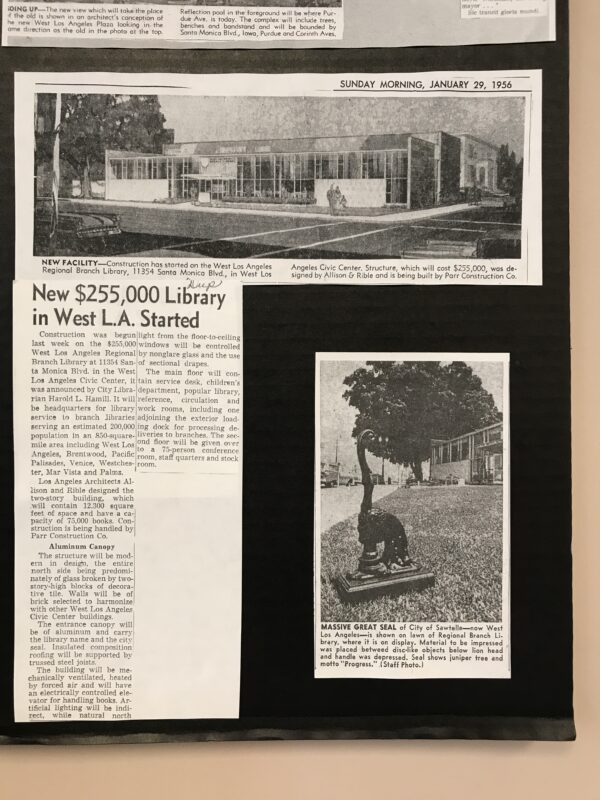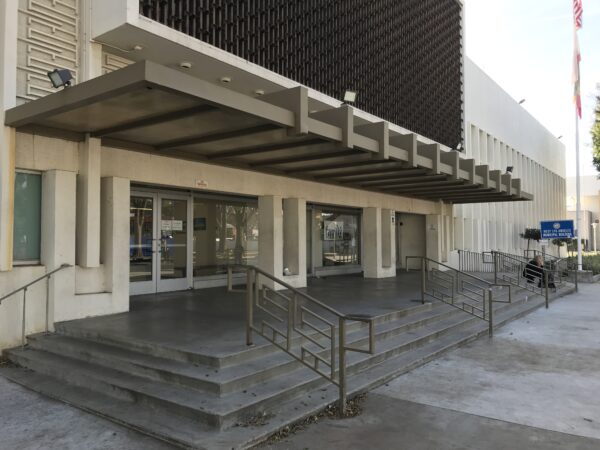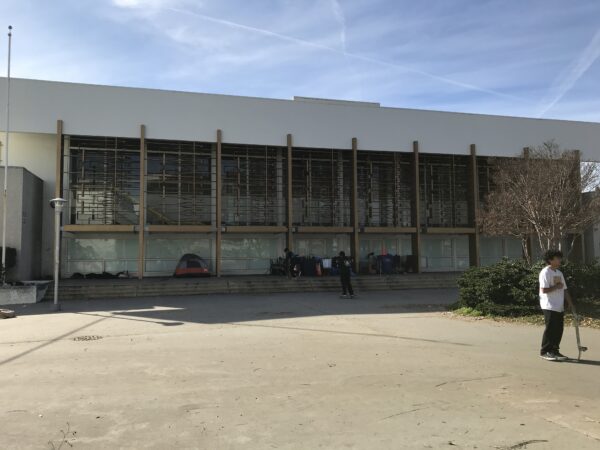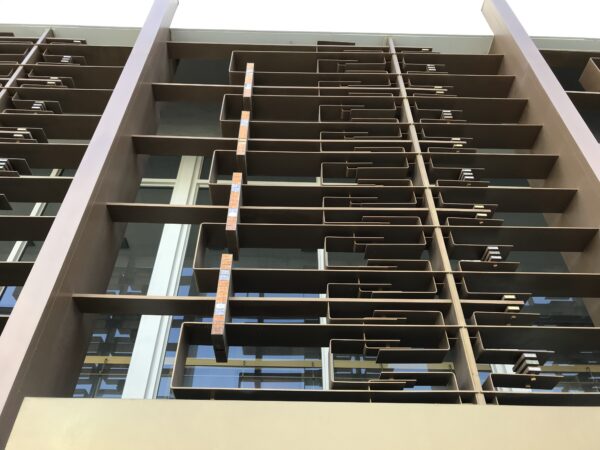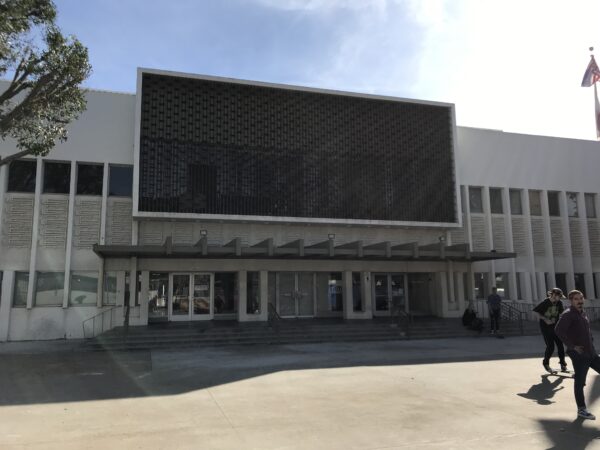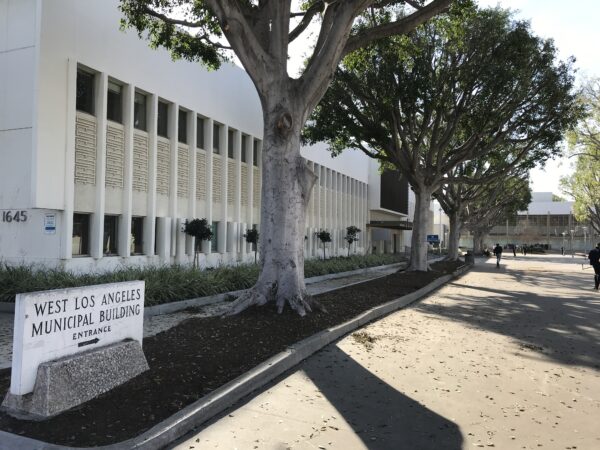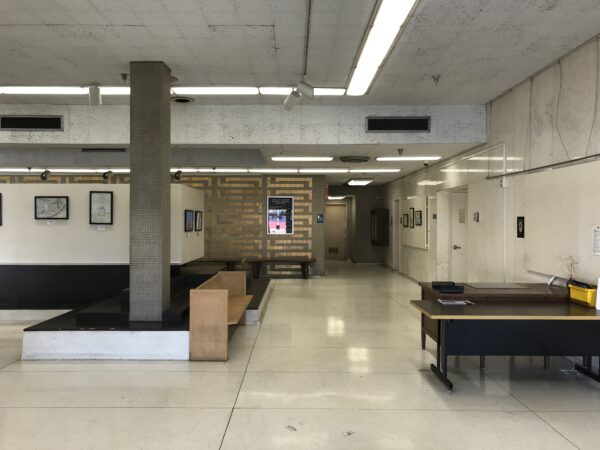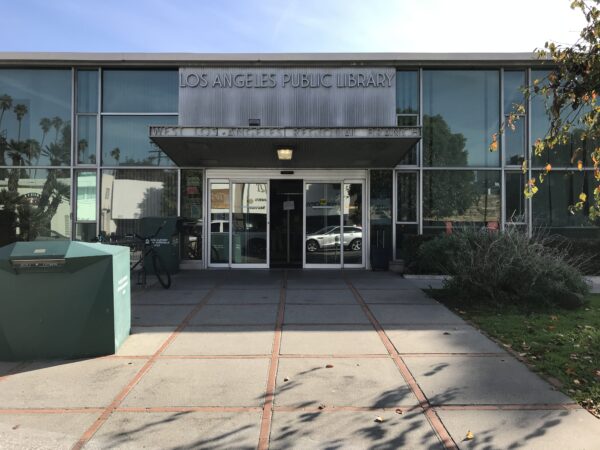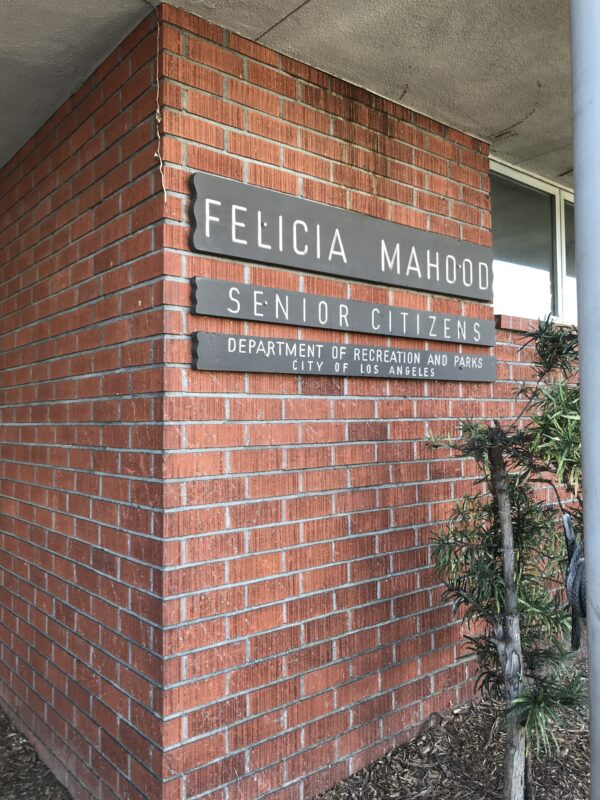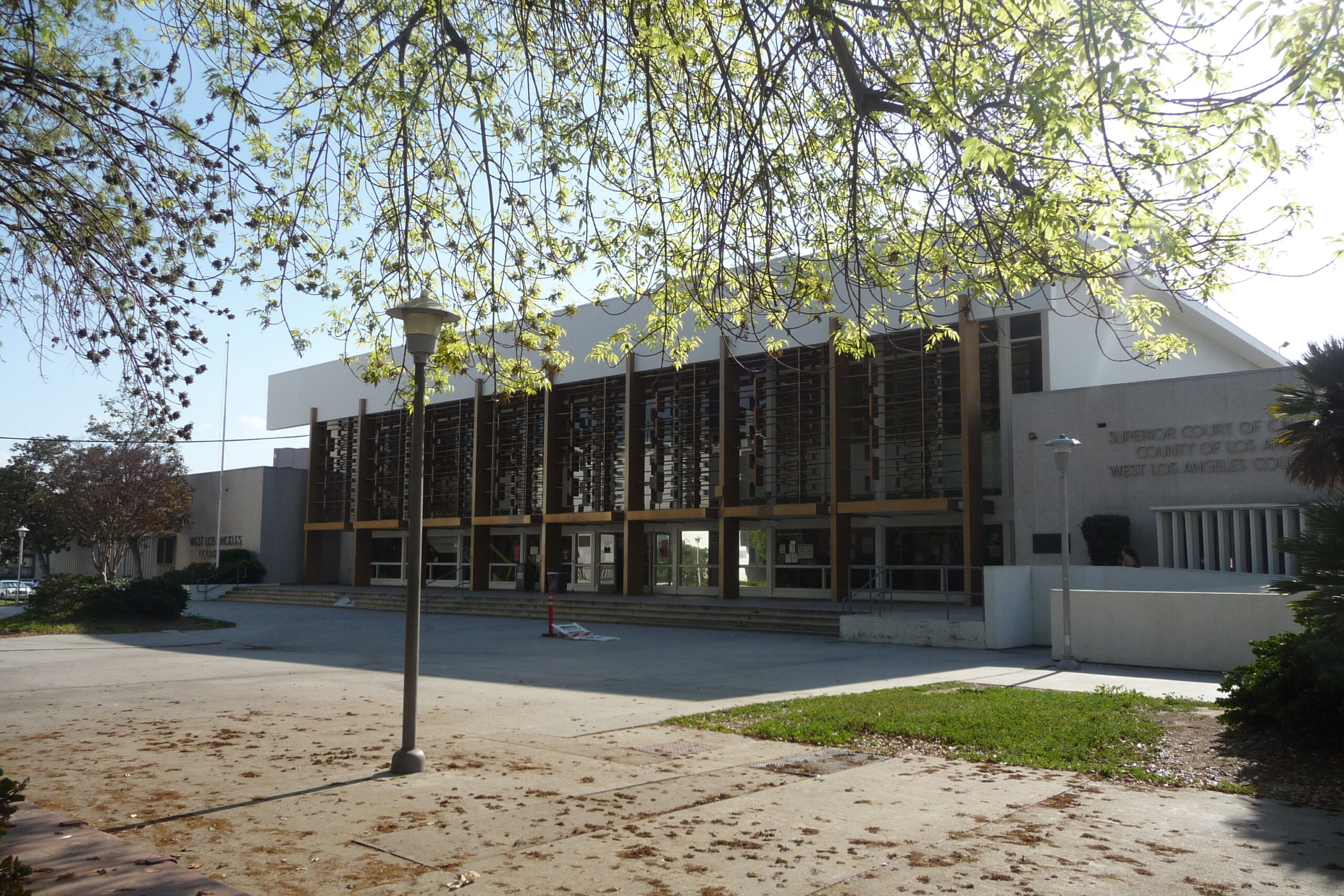
Place
West Los Angeles Civic Center
Built between 1957 and 1965, the civic center reflects the postwar growth of municipal services and the general optimism of the period, exemplified by its eye-catching Mid-Century Modern design.
Active
SurveyLA identified the West Los Angeles Civic Center as an eligible Historic District, currently at risk by a proposed redevelopment project called the West LA Commons.
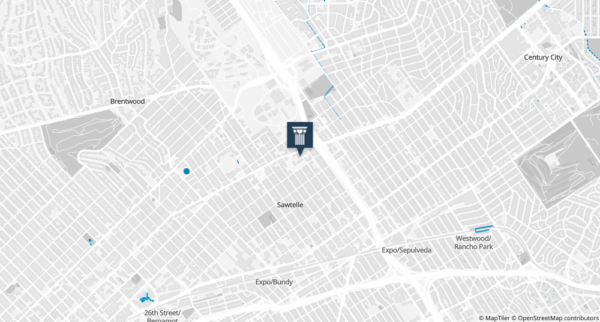
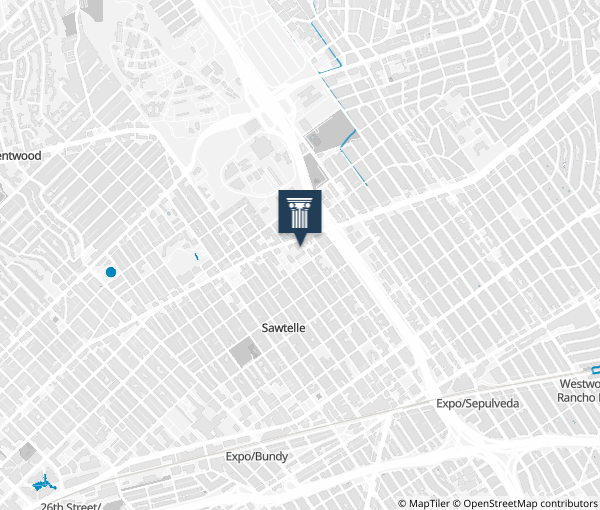
Place Details
Address
Website
Architects
Year
Style
Decade
Designation
Property Type
Government Officials
Community
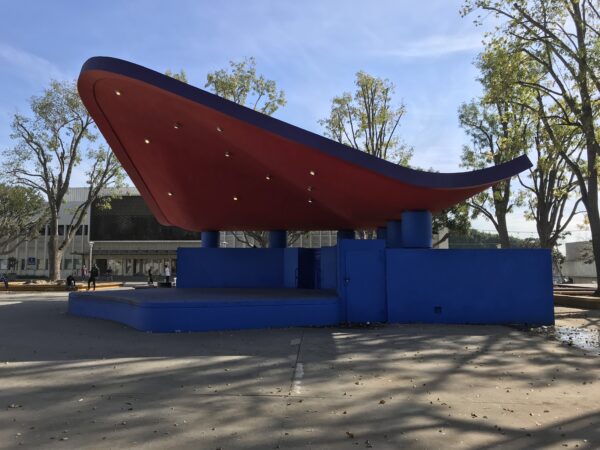
West Los Angeles Civic Center Bandstand | Erik Van Breene / L.A. Conservancy
Overview
A project known as the West L.A. Commons is proposed for the current West Los Angeles Civic Center.
On July 1, 2022, the Conservancy submitted comments on the County of Los Angeles’s West L.A. Commons Project Notice of Preparation (NOP) as the first step in the California Environmental Quality Act (CEQA) review process. In our comments, we voiced our concerns and advocated for a more preservation-minded project that meets all the goals and objectives as set forth in the Project’s Request for Proposals (RFP). The next public comment period will come when the Draft Environmental Impact Report is released (date TBD).
The Conservancy was alerted to the release of the County of Los Angeles’s initial Request for Proposals (RFP) in May 2020 for the redevelopment of the West Los Angeles Civic Center. Since then, the Conservancy, along with community stakeholders, have advocated for preservation-based solutions that recognize the cultural and architectural significance of this historic place.
About This Place
About This Place
The West Los Angeles Civic Center is an excellent and intact example of a Mid-Century Modern style branch administrative center. The civic center complex is a significant representation of expanded government services following World War II.
The West Los Angeles Civic Center is the product of the City’s 1949 master plan to create branch administrative centers throughout the city to provide more convenient service to residents of the rapidly expanding metropolis. Built between 1957 and 1965, the civic center reflects the postwar growth of municipal services and the general optimism of the period, exemplified by its eye-catching Mid-Century Modern design.
The five-building complex’s first edifice, a regional branch library, was designed by architectural firm Allison & Rible and was completed by 1956. The rest of the buildings and the overall landscape of the center appear to have been designed by architect Albert Criz, with completion of the court building and landscape in 1960, the branch City Hall in 1961, the community center in 1962, and the amphitheater in 1965.
All of the buildings are in the Mid-Century Modern style and feature horizontal orientations, concrete construction, flat roofs, bands of windows, and glass entryways. The City Hall and court buildings are particularly notable for the decorative concrete grilles and geometric metal brise soleils which ornament their front façades. The most flamboyant structure is the amphitheater, with a swooping, parabolic arch of a roof held aloft by tiled pillars and sheltering a small stage with curves to match. It looks for all the world like a miniature version of the famous Union 76 station in Beverly Hills.
The complex’s buildings are connected and unified by a central pedestrian plaza and an intersecting mall, both paved in concrete and shaded by dense plantings of mature trees. This civic center is a great example of Mid-Century Modern architecture in an institutional context, and serves as an intact reminder of Los Angeles’ rapid postwar expansion.
Today, the Civic Center continues its government functions as envisioned. However, in the 1990s, the Civic Center became a prominent location for the progression of skateboarding. During this period, skateboarders from across the world traveled to the Civic Center after it was featured heavily in skateboarding films.
The West Los Angeles Civic Center Historic District is made up of four contributing buildings and one structure as listed below:
- West Los Angeles Courthouse (1960)
- The West L.A. branch City Hall/Municipal Building (1961)
- Felicia Mahood Senior Center (1962)
- LAPL West L.A. Regional Branch Library (1956)
- The Bandshell (1965)
Our Position
The Los Angeles Conservancy believes that the West Los Angeles Civic Center is an excellent and intact example of a Mid-Century Modern branch civic center. By combining adaptive reuse and sensitive infill construction, the City and County of Los Angeles can meet their project objectives while maintaining the historic built environment.
The November 9, 2021 community meeting (sponsored by County Supervisor Sheila Kuehl, then-City Councilmember Mike Bonin, and the development team of AvalonBay and Abode Communities) shed some light and details on the West L.A. Commons project but few on preservation, much like the project itself. As planned, and announced at the time, the 1960 Courthouse Building, 1961 branch City Hall/Municipal Building, 1962 Community Center (Felicia Mahood Senior Center), and 1965 Bandshell are to be demolished. Only the 1956 library will stay (for now) and is not a part of this project scope. This means an eligible historic district marking an important part of West L.A.’s growth will be erased.
Two facades of the branch City Hall were planned to be kept (which is not preservation) yet that is now being reconsidered, citing soil conditions. The same goes for the Googie style Amphitheatre, also being reconsidered for some form of preservation instead of demolition. Despite being indicated for preservation in the proposal that was selected by the City and County, the developer came back with a plan later to demolish this structure.
As a public-private venture between the City, County and the developer (AvalonBay and Abode Communities), preservation was supposed to be a priority, at least it was in the official Request for Proposals (RFP) process, and stated as one of ten key aspects to be addressed.
Preservation through adaptive reuse is readily achievable in this project and can complement the proposed new mixed-income housing. New buildings of the same footprint are to replace the branch City Hall and Courthouse. The existing Amphitheatre can be repurposed and kept.
While it may be deemed easier to demolish everything and build subterranean parking over the entire site than build around the historic buildings, that’s not always the best approach. Easy does not equal better. Until someone in leadership steps forward and presses for an alternative that successfully marries the old with the new, this development team will continue to seek the easy way out. As a familiar pattern that keeps repeating itself across this city, L.A. can do and deserves better.
How You Can Help
FIRST: To help save the West L.A. Civic Center, voice your concern to City Councilmember Traci Park at councilmember.park@lacity.org or 310-575-8461 and County Supervisor Sheila Kuehl (sheila@bos.lacounty.gov).
SECOND: Submit written comments to the West L.A. Neighborhood Council at chair@westlasawtelle.org
THIRD: Submit written public comments for the Project’s forthcoming Draft Environmental Impact Report (release date TBD). This will be the second opportunity for public comment on the project as mandated under the California Environmental Quality Act (CEQA). The next public. For more information on CEQA, visit the conservancy’s Guide To Using CEQA.
Help us advocate for a win-win outcome where preservation is paired with sensitively designed new development.
